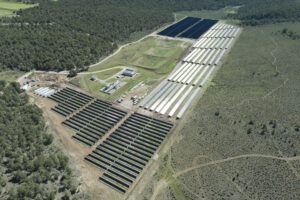
This article is sponsored by 3E.
Bold ideas are pivotal even with imperfect execution. Humans have gone to space and walked on the moon, mapped the human genome and created the internet. Circularity is one such idea that can be difficult for companies to implement because it isn’t always clear-cut.
We won’t get there in a single leap — companies must view partial or failed attempts as steppingstones to building products for a circular economy. With circularity being a relatively new concept, there is not yet a perfect formula for its execution.
At the product usage or end-of-life stage, it is near impossible to implement or improve on a product’s circularity. That’s why circularity efforts must begin in the early phases of product development or re-design to ensure the most effective circular strategies. One 2017 research paper called for companies to develop "circularity readiness" that can fit better in product design timelines.
With that in mind, there are several strategies to consider in the early stages of circular design:
1. Avoid monstrous hybrids — engineer for deconstruction
Designing a product to be taken apart and reincorporated into the supply chain is something that should be considered from the beginning stages of product development. Key to circularity is the ability to maintain and/or repair, reuse and redistribute, refurbish, and remanufacture and recycle, in order of desirability. For each tactic, it’s necessary to be able to separate a product into parts and components.
This is even more important for complex products that have been traditionally difficult to recycle in any way. It is important to avoid permanent structures and the inability to separate components. Composite materials and materials that are a combination of natural substances, synthetic substances and other additives increase product complexity and can make any form of repurposing or recycling impossible or very energy intensive.
2. Invest in circularity, and the market will follow
The "early-adopter tax" is a byproduct of circularity being a relatively new approach. Often, manufacturers do not know the entire composition of their product due to data secrecy. Long-established supply chain relationships mean it can sometimes be a challenge to find a supplier willing to disclose product composition data and have that information reflect safety and circularity standards. To prioritize circularity, the early stages of product development might mean paying more for those materials that will meet your standards of circularity later. However, the benefit of being a leader in the transition to the circular economy will pay off later in market returns and global well-being.
3. Advocate for infrastructure
Product development, supply chain management and all the things that come with them require quality data and data management. Reaching circularity goals can be helped by having software that helps manage your product composition, reaching out to your supply chain partners and screening your product for regulations. Revisiting the aims of circular design requires high-quality product information in order to repurpose or recycle products. This is one place where many manufacturers get stuck and that is also why there is a premium on material transparency information. Toxnot is a platform that can aid and facilitate data infrastructure to meet circularity goals at every point in the supply chain.
Staying motivated to execute circularity
While the long-established infrastructure for our current system will need some adjusting, we simply do not have the option of continuing with business as usual. Instead of accepting circularity’s faults as a loss, let’s take the critiques, hold on to the inspiration and get to problem-solving.
Toxnot’s customers are embracing circularity and making it a reality. One great place to start your own circularity journey is to download our free Circular Implementation Guide and get a head start on developing your company's circularity goals.
- SEO Powered Content & PR Distribution. Get Amplified Today.
- PlatoData.Network Vertical Generative Ai. Empower Yourself. Access Here.
- PlatoAiStream. Web3 Intelligence. Knowledge Amplified. Access Here.
- PlatoESG. Automotive / EVs, Carbon, CleanTech, Energy, Environment, Solar, Waste Management. Access Here.
- PlatoHealth. Biotech and Clinical Trials Intelligence. Access Here.
- ChartPrime. Elevate your Trading Game with ChartPrime. Access Here.
- BlockOffsets. Modernizing Environmental Offset Ownership. Access Here.
- Source: https://www.greenbiz.com/article/3-strategies-embedding-product-circularity-start
- :is
- :not
- :where
- a
- ability
- Able
- accepting
- additives
- advocate
- Aid
- aims
- All
- also
- always
- and
- any
- apart
- approach
- ARE
- article
- AS
- At
- Attempts
- avoid
- BE
- because
- been
- begin
- Beginning
- being
- benefit
- Better
- Building
- business
- by
- called
- CAN
- chain
- challenge
- circular economy
- combination
- come
- Companies
- company
- complex
- complexity
- components
- composition
- concept
- Consider
- considered
- continuing
- created
- Current
- Customers
- data
- data infrastructure
- data management
- Design
- develop
- developing
- Development
- difficult
- Disclose
- do
- download
- due
- each
- Early
- economy
- Effective
- efforts
- embedding
- embracing
- energy
- energy intensive
- engineer
- ensure
- Entire
- Even
- Every
- execute
- execution
- facilitate
- Failed
- faults
- Find
- fit
- For
- form
- formula
- Free
- from
- genome
- get
- Global
- Goals
- gone
- great
- Have
- having
- head
- helped
- helps
- high-quality
- hold
- However
- HTTPS
- human
- human genome
- Humans
- idea
- ideas
- implement
- implementation
- important
- impossible
- improve
- in
- inability
- Increase
- information
- Infrastructure
- Inspiration
- instead
- Internet
- into
- Invest
- IT
- ITS
- journey
- jpg
- Key
- Know
- later
- leader
- Leap
- loss
- maintain
- make
- Making
- manage
- management
- Manufacturers
- many
- Market
- material
- materials
- mean
- Meet
- might
- mind
- Moon
- more
- most
- motivated
- must
- Natural
- Near
- necessary
- Need
- New
- of
- off
- often
- on
- ONE
- Option
- or
- order
- Other
- our
- out
- own
- partners
- parts
- Pay
- paying
- perfect
- permanent
- pivotal
- Place
- platform
- plato
- Plato Data Intelligence
- PlatoData
- Point
- Premium
- Prioritize
- problem-solving
- Product
- product design
- product development
- Product information
- Products
- quality
- quality data
- reaching
- Readiness
- Reality
- recycling
- reflect
- regulations
- Relationships
- relatively
- repair
- require
- requires
- research
- returns
- reuse
- s
- Safety
- screening
- separate
- several
- should
- simply
- single
- Software
- some
- something
- sometimes
- Space
- Sponsored
- Stage
- stages
- standards
- start
- strategies
- such
- supplier
- supply
- supply chain
- supply chain management
- synthetic
- system
- Take
- taken
- tax
- that
- The
- their
- Them
- There.
- things
- this
- those
- timelines
- to
- traditionally
- transition
- Transparency
- Usage
- very
- View
- walked
- Way..
- we
- why
- will
- willing
- with
- yet
- Your
- zephyrnet











